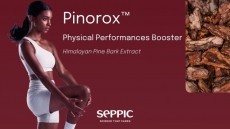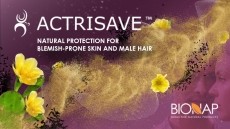Bulletin highlights adulteration issues for St. John's wort

St. John’s wort (Hypericum perforatum L.) is most commonly used for depression. There is strong scientific evidence that it is effective for mild-to-moderate depression.
According to the recent report from the American Botanical Council, sales of St John’s wort were $6 million in US mainstream multi-outlet channel in 2015, and a further $2.5 million in the natural retail channel (HerbalGram 111).
The unintentional collection of closely related Hypericum species instead of authentic St. John’s wort was described as early as the 1980s. The addition of food dyes to St. John’s wort extracts with the aim to fool standard laboratory tests (spectrophotometric determination of total hypericins) in order to comply with the labeled contents (usually 0.3%) has been documented only recently. For example, a paper published last year in the Journal of AOAC International (Vol. 99, No. 5, pp. 1204-1212) reported that of the 37 samples of St John’s wort tested – including herb, dry extracts, and commercial products – approximately 38% were inauthentic because they contained a mixture of synthetic dyes and uncharacteristic flavonoids (22%) or they only showed the uncharacteristic flavonoid pattern only (16%).
The new Bulletin, peer-reviewed by 16 experts, is authored by Allison McCutcheon, PhD, an herbal research expert in British Columbia, Canada. It provides information on the growing range, production, and market importance of St. John’s wort and its extracts. It also lists the known adulterants, potential therapeutic and/or safety issues with the adulterating species, and analytical approaches to detect adulterants.
“Adulteration of St. John’s wort extracts with chemical dyes is no accident,” said Mark Blumenthal, founder and executive director of ABC and founder and director of the Botanical Adulterants Program. “Detection of these dyes by use of appropriate analytical methods in industry laboratories is an important step in preventing the presence of fraudulent and ineffective extracts from being sold to consumers. This is one of the key objectives of our Botanical Adulterants Program.”
Stefan Gafner, PhD, ABC chief science officer and Botanical Adulterants Program technical director, added:“The sale of St. John’s wort extracts containing undeclared food dyes has been reported by a number of analysts from industry and contract analytical laboratories. This type of adulteration is quite easily detected with appropriate analytical methods.”
“The distinction of the various Hypericum species is challenging, and a good control over the supply chain is crucial,” said Dr Gafner. “For the laboratory analysts, more data on the morphological, phytochemical, and genetic differences of closely related species would be beneficial to help to ensure presence of authentic St. John’s wort.”
















